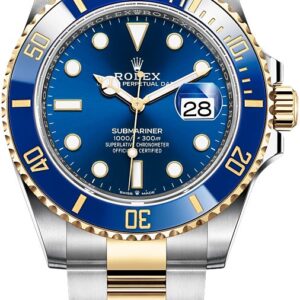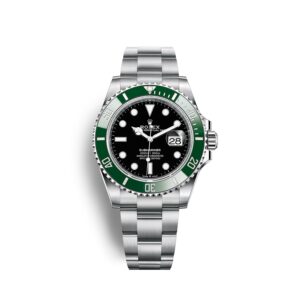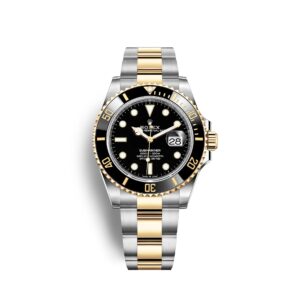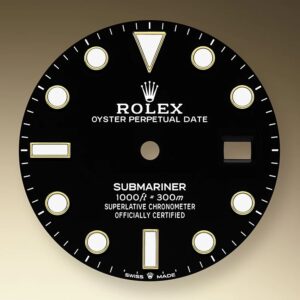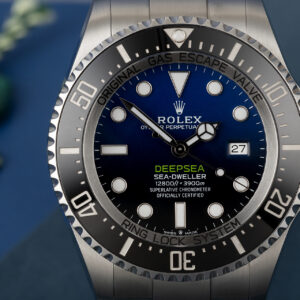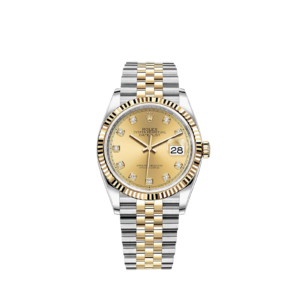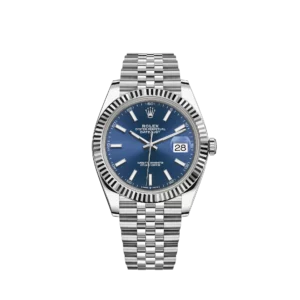Alfred Davis and his brother-in-law Hans Wilsdorf founded Wilsdorf and Davis, the company that would eventually become Rolex SA, in London in 1905. Wilsdorf and Davis’s main commercial activity at the time involved importing Hermann Aegler’s Swiss movements to England and placing them in watch cases made by Dennison and others. These early wristwatches were sold to many jewellers, who then put their own names on the dial. The earliest watches from Wilsdorf and Davis were usually hallmarked “W&D” inside the caseback.
In 1908, Wilsdorf registered the trademark “Rolex”, which became the brand name of watches from Wilsdorf and Davis. He opened an office in La Chaux-de-Fonds, Switzerland. Wilsdorf wanted the brand name to be easily pronounceable in any language, and short enough to fit on the face of a watch. He also thought that the name “Rolex” was onomatopoeic, sounding like a watch being wound.
During World War I, Rolex manufactured trench watches.[better source needed] In November 1915, the company changed its name to Rolex Watch Co. Ltd. In 1919, Hans Wilsdorf moved the company from England to Geneva, Switzerland, because of heavy post-war taxes levied on luxury imports and high export duties on the silver and gold used for the watch cases. In 1919 the company’s name was officially changed to Montres Rolex SA and later in 1920 to Rolex SA.
With administrative worries attended to, Wilsdorf turned the company’s attention to a marketing challenge: the infiltration of dust and moisture under the dial and crown, which damaged the movement. To address this problem, in 1926 a third-party casemaker produced a waterproof and dustproof wristwatch for Rolex, giving it the name “Oyster”. The original patent attributed to Paul Perregaux and Georges Peret, that allowed the watch to be adjusted while maintaining protection from water ingress was purchased by Rolex and heavily marketed. The watch featured a hermetically sealed case which provided optimal protection for the movement.
As a demonstration, Rolex submerged Oyster models in aquariums, which it displayed in the windows of its main points of sale. In 1927, British swimmer Mercedes Gleitze swam the English Channel with an Oyster on her necklace, becoming the first Rolex ambassador. To celebrate the feat, Rolex published a full-page advertisement on the front page of the Daily Mail for every issue for a whole month proclaiming the watch’s success during the ten-hour-plus swim.
In 1931, Rolex patented a self-winding mechanism called a Perpetual rotor, a semi-circular plate that relies on gravity to move freely. In turn, the Oyster watch became known as the Oyster Perpetual.
Upon the death of his wife in 1944, Wilsdorf established the Hans Wilsdorf Foundation, a private trust, in which he left all of his Rolex shares, ensuring that some of the company’s income would go to charity. Wilsdorf died in 1960, and since then the trust has owned and run Rolex SA.
-
ROLEX SUBMARINER DATE 126613LB-002 TWO TONE “BLUESY”
The Rolex Bluesy Oyster Perpetual Submariner Date in Oystersteel and yellow gold with a Cerachrom bezel insert in blue ceramic and a royal blue dial with large luminescent hour markers.
Estimated delivery on 28 November - 4 December, 2024$56,000.00 EAN: 147000102621 -
ROLEX SUBMARINER OYSTERSTEEL 116610LV-0002 (HULK)
This Rolex Submariner Date Hulk 116610LV-0002 is an exquisite timepiece that combines superior craftsmanship with luxurious design. Boasting a 40mm stainless steel case and scratch resistant green ceramic bezel, this watch is built to last. The iconic green dial creates a striking contrast with the stainless steel case and bracelet. The oyster bracelet is secured by an Oysterlock safety clasp, and the watch is powered by an automatic chronometer-certified movement for precise timekeeping. With its sophisticated design, this Rolex Submariner Date Hulk 116610LV-0002 is sure to add a touch of class to any outfit.
Estimated delivery on 28 November - 4 December, 2024$45,000.00 EAN: 105000102300 -
ROLEX SUBMARINER DATE 41 126610LV-0002 LUXURY TIMEPIECE
The Rolex Oyster Perpetual Submariner Date in Oystersteel with a Cerachrom bezel insert in green ceramic and a blackdial with large luminescent hour markers.
Estimated delivery on 28 November - 4 December, 2024$20,000.00 EAN: 016000098794 -
ROLEX SUBMARINER DATE OYSTER STEEL AND YELOW GOLD 41mm 2022 REF: 126613LN
Rolex Submariner Date, 41mm watch of polished Stainless Steel and 18k Yellow Gold. This model has black dial with a polished 18k Yellow Gold hour, minute and seconds hands in Mercedes-logo and Breguet-style sword shape with luminous fill. Applied polished 18kt Yellow Gold rimmed doty and index hour markers with luminous fill. Fine printed minute/seconds track on the dial rim. Highly legible Chromalight display with long-lasting blue luminescence. Polished 18kt Yellow Gold patented “Triplock” locking crown ensuring that the crown screws down onto the Oyster case as securely as a submarine hatch. The dial closed by a Scratch-resistant Sapphire Crystal and solid case back made. The Watch has Centre hour minute and seconds hands. Stop-seconds for precise time setting. Date window at 3 o’clock with a cyclops magnifier. The watch is equipped unidirectional rotatable polished 18k Yellow Gold bezel with knurled corners for enhanced grip. Black “Cerachrom” bezel insert, made of ceramic which is extremely hard, durable and highly scratch-resistant. Ceramic has excellent corrosion resistant properties and is unaffected by ultraviolet rays so the color will not fade. It features a 60-minute immersion scale engraved in yellow gold with a luminous point at the origin. The movement is mechanical self-winding 3235, containing 31 Jewels and 70 hours of power reserve. The Rolex Oyster bracelet of brushed outer links Stainless Steel and polished center links 18k Yellow Gold with folding Oysterlock safety clasp with Rolex Glidelock extension system. The water resistance is up to 300 meters/1000 feet.
Estimated delivery on 28 November - 4 December, 2024$22,000.00 EAN: 191000098644 -
ROLEX DEEPSEA D-BLUE 126660
As before, the new Deepsea boasts extreme water resistance up to 12,800ft, or 3900m. And to that end, the watch features bright blue Chromalight luminescence for optimal visibility in darkness, the patented Ringlock System, the helium escape valve as well as the “Triplock” winding crown.
Estimated delivery on 28 November - 4 December, 2024$19,000.00 EAN: 175000072637ROLEX DEEPSEA D-BLUE 126660
$19,000.00 -
ROLEX DATEJUST 36 OYSTER, OYSTER-STEEL AND YELLOW GOLD 126233
This Oyster Perpetual Datejust 36 in Oystersteel and yellow gold features a champagne colour, diamond-set dial and a Jubilee bracelet.
Estimated delivery on 28 November - 4 December, 2024$27,000.00 EAN: 053000064992 -
Estimated delivery on 28 November - 4 December, 2024$20,000.00 EAN: 165000064381




